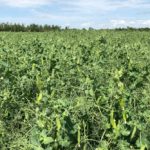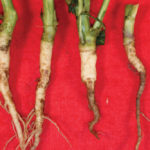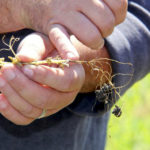
Tag Archives root rot

Managing diseases in alfalfa
From seedling issues to stand die-off, understanding the timing and symptoms of alfalfa diseases can help protect yield

Saskatchewan researchers find some pea varieties naturally resistant to root rot
Further testing is underway to more clearly distinguish the contenders

Aphanomyces still a stubborn foe
Research offers hope, but proper crop management remains the best defence for today

No easy fix for pulse crop problems
A Saskatchewan pulse producer weighs his options and risks for planting lentils in fields previously hit hard by aphanomyces — plus, the latest research and recommendations on root rot management in pulses

What can you grow if root rot kicks out peas and lentils?
You may need an eight-year break between those crops, but there are some other pulses to consider

Pulse weekly outlook: Saskatchewan pulses heading for a good year

How to identify and prevent root rots in canola
If you’re not scouting for root rots, that doesn’t mean they’re not there

Yes to peas, no to aphanomyces
Peas are a great crop for the Prairies, but aphanomyces root rot is a major threat

Preventing and controlling aphanomyces root rot



